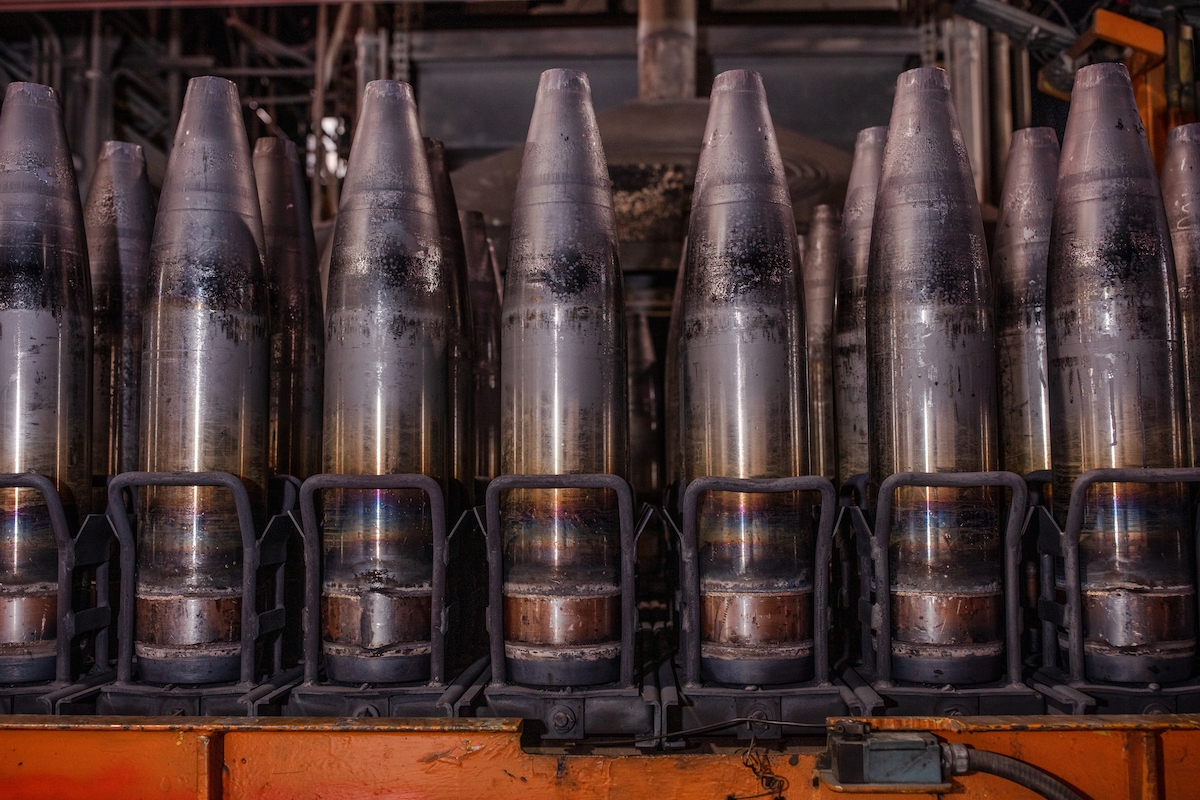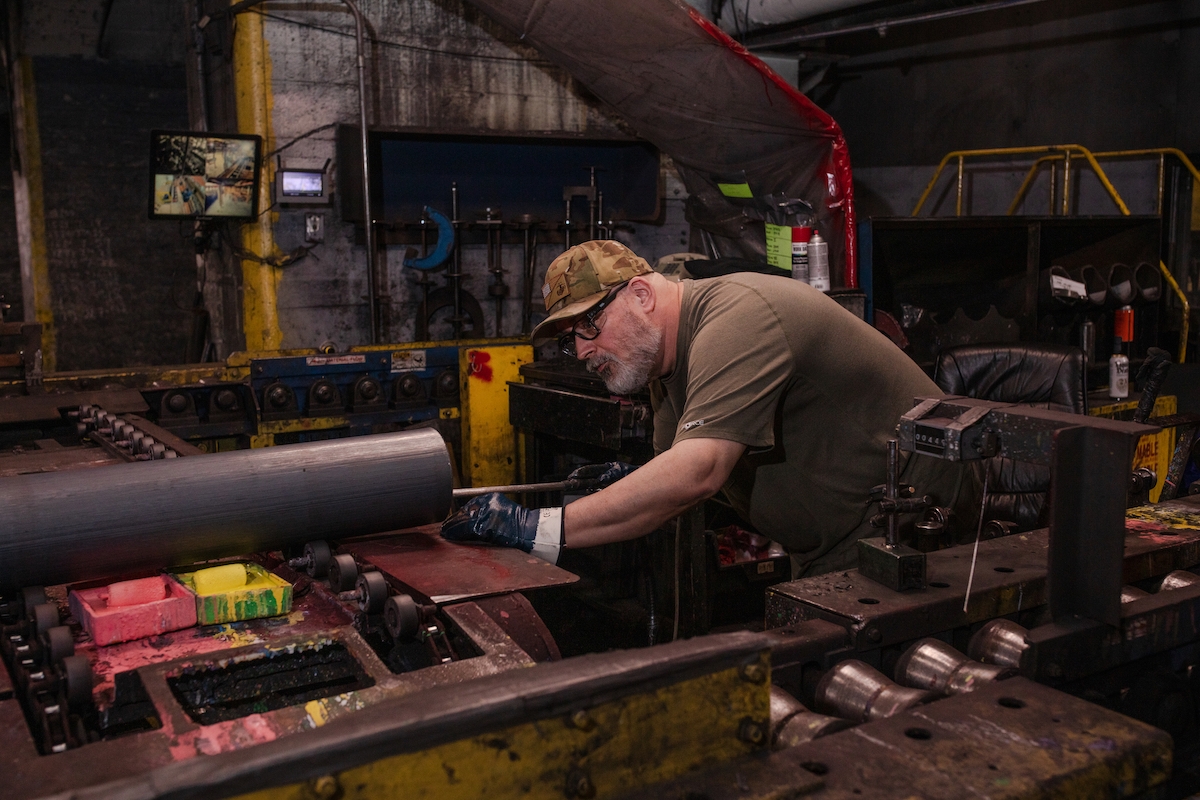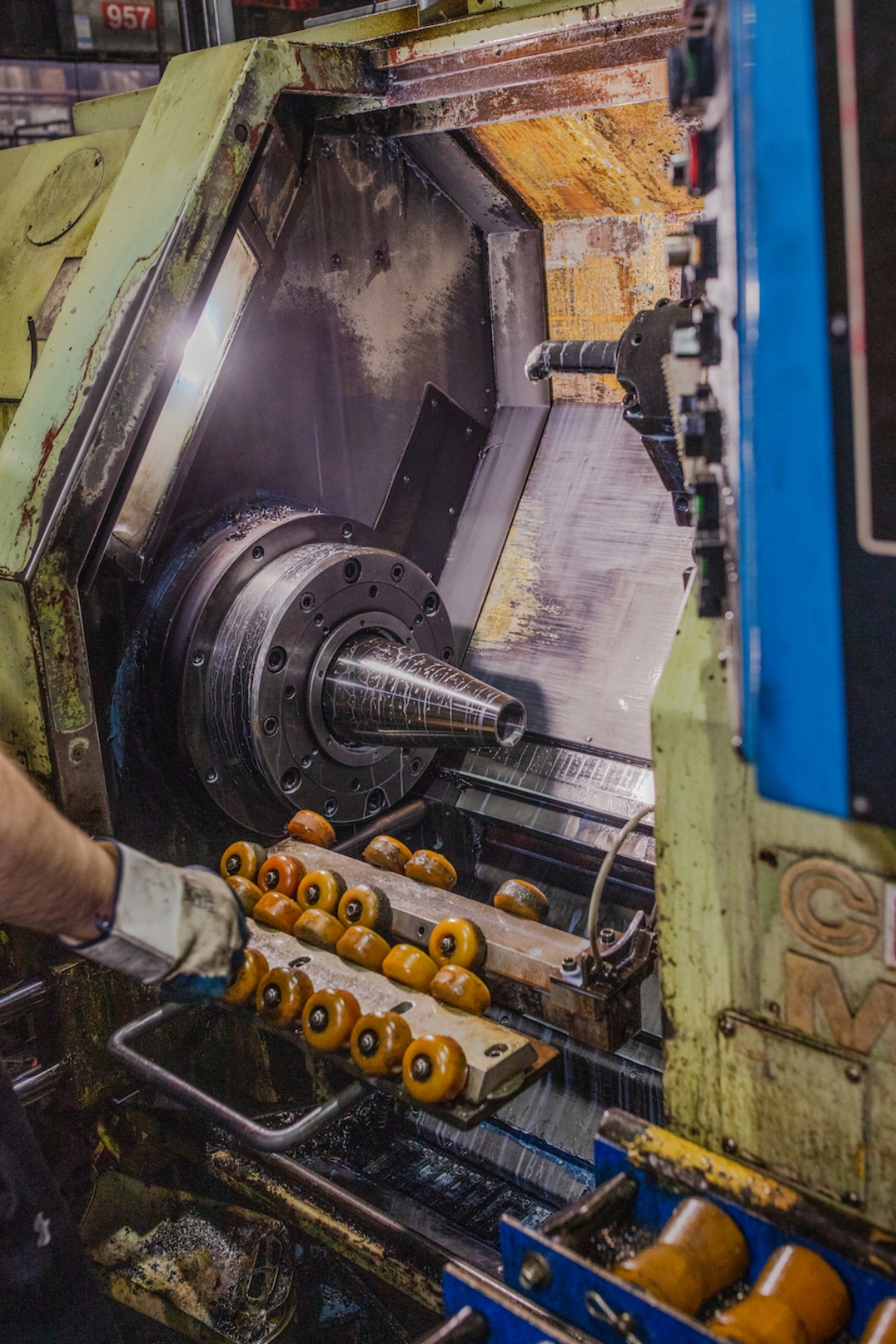
Journalists of the American newspaper The New York Times have visited the factories of the US Department of Defense, which produce artillery ammunition.
In order to do this, they had to receive permission from the Pentagon.
The publication notes that most of the shells made there are sent to Ukraine.
The representatives of the newspaper have visited the factory in Scranton, Pennsylvania, where the hulls of shells are produced, as well as the factory in Middletown, Iowa, where the readymade shell hulls are filled with explosives and packed for shipment.
The northeastern Pennsylvania plant in Scranton first began manufacturing steel shells in the early 1950s for the Korean War.
Steel arrives at the plant in the form of bars of over six meters in length and weighing more than 900 kilograms each. Automated saws then cut them into pieces called blanks.

Further, the robot arm quickly feeds the blanks into a natural-gas-fired furnace. There they lie for just over an hour and heat up to 1,000 degrees.
After that, the heated metal cylinders pass through three hydraulic presses, which penetrate and stretch them to the desired length.
The conveyor then moves the workpieces to the furnace, where a four-hour heat treatment process takes place. As a result, the steel body breaks into small fragments when the shell explodes on the battlefield.

Throughout the production process, workers perform quality-control inspections on the workpieces.
Another machine quickly heats up and presses the open top of the cylindrical case and turns this part into a conical shape – now the workpiece takes on the appearance of an artillery shell.

After cooling down, the workpieces pass through lathes, where excess metal is removed to straighten their form.
Further, workers weld copper rings around the bottom of the hull.

In the next step, ammunition hulls are painted to protect against corrosion and rust.
Following this, the shells are sent to the Middletown plant, where the hollow metal hulls are turned into a finished shell. This is when they are filled with explosives.

Once the explosives are poured, the projectiles pass through X-rays that detect any cavities inside the projectiles that may adversely affect the combat use of ammunition.

This is one of the final quality inspections that artillery ammunition undergoes.

Next, some shells will be sent to Yuma, Arizona, where they will be fired from howitzers at the test site. If the tests are successful, the remaining dozens of thousands of shells from this month’s batch will be approved for use.
Підтримати нас можна через:
Приват: 5169 3351 0164 7408 PayPal - [email protected] Стати нашим патроном за лінком ⬇
Subscribe to our newsletter
or on ours Telegram
Thank you!!
You are subscribed to our newsletter